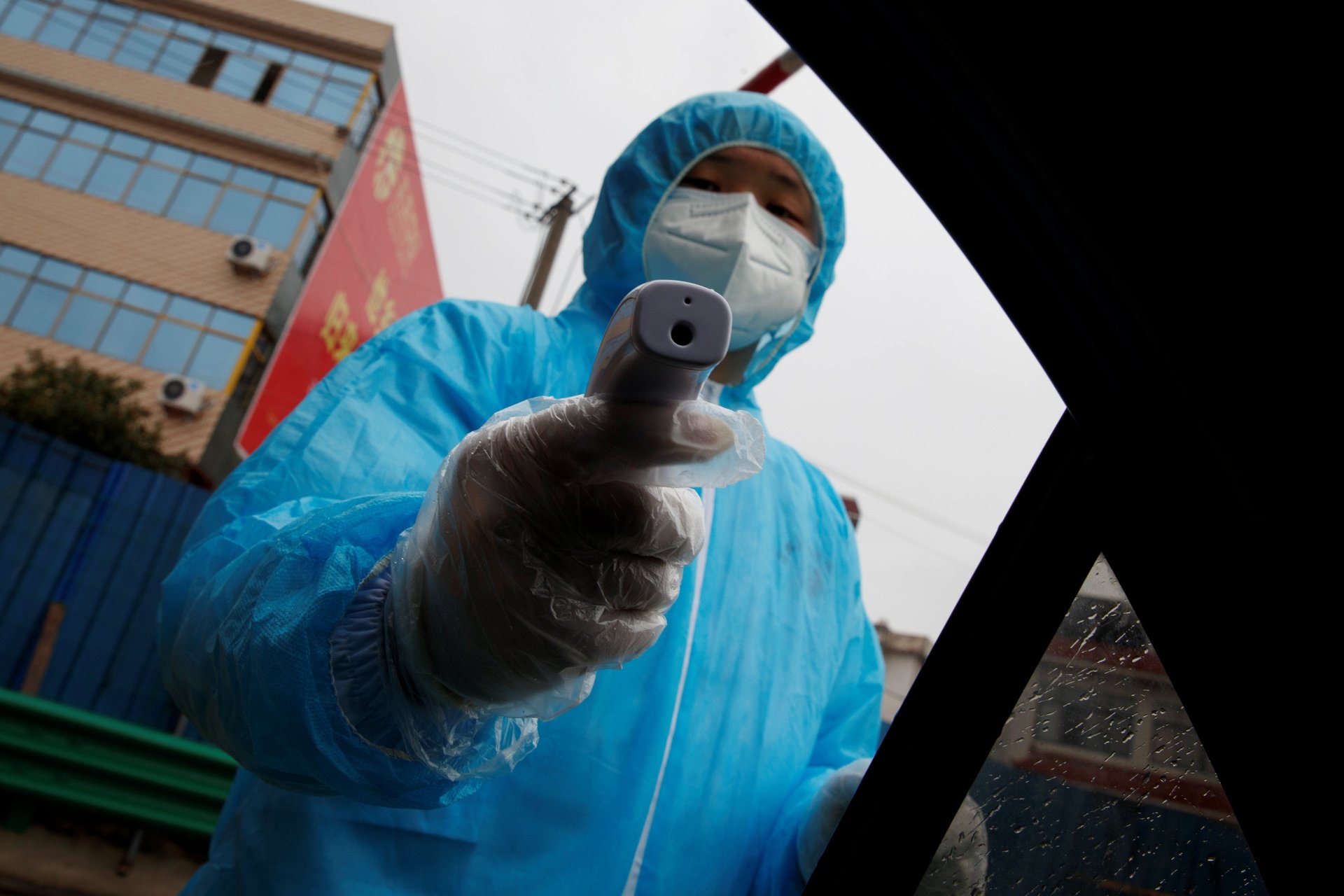It’s too early to say how deadly the China coronavirus is
People everywhere are pronouncing with confidence that China’s coronavirus outbreak is either: much less severe than SARS; less deadly than the flu (or at least no worse than it), or is comparable to the cold. Many news outlets, meanwhile, have reported that the novel coronavirus has a fatality rate of about 2%—apparently much lower than SARS or MERs.


People everywhere are pronouncing with confidence that China’s coronavirus outbreak is either: much less severe than SARS; less deadly than the flu (or at least no worse than it), or is comparable to the cold. Many news outlets, meanwhile, have reported that the novel coronavirus has a fatality rate of about 2%—apparently much lower than SARS or MERs.
They may be right. But they may also be completely wrong. The truth is, it’s far too early to say with any certainty how deadly the China coronavirus is. And if history is any guide, we would do well to remember that during the 2003 SARS epidemic, news outlets and even the World Health Organization (WHO) initially reported fatality rates that were far lower (“only about 3%,” for example) than the ultimate overall rate of 9.6%.
“The reality is that it will take careful studies over the coming months, with good case ascertainment or lab testing, to say whether 2% is about right, too low, or too high,” said Arthur Reingold, division head of epidemiology and biostatistics at the University of California, Berkeley.
The WHO, for its part, has cautioned against prematurely pronouncing a fatality rate. Speaking at a press briefing on Jan. 29, Michael Ryan, executive director of the WHO’s health emergencies program, said “it’s very early to make any conclusive statements about what the overall mortality rate will be,” adding that the focus should be on “how many have died from how many have been reported,” rather than fixating on a percentage.
There are many different ways of describing the deadliness of a disease, and there are many complicating factors that can introduce biases into estimates of fatality risks during outbreaks. For example, one could talk about the hospital fatality risk (HFR)—that is, risk of fatality among cases who were hospitalized for medical need, excluding those who are only hospitalized for isolation. There’s also the symptomatic case fatality risk (sCFR), or the risk of fatality among all symptomatic cases. Then there’s the population mortality rate (PFR), which gives an idea of the likelihood of anyone in a given population dying of the infectious disease. It’s important to make these distinctions because each answers a different question, and each can be under- or overestimated.
In the current coronavirus outbreak that began in China and has since spread worldwide, experts say both under- and overestimation are at play.
“We think the hospital fatality rate is being underestimated because many cases are still in hospital and not yet resolved,” said Benjamin Cowling, division head of epidemiology and biostatistics at the University of Hong Kong. “We think this could be in the range 10% to 30%, which would be similar to the severity of hospitalized cases of SARS and MERS. We think the sCFR is being overestimated because many mild cases are not tested and laboratory-confirmed. We do not have good information on sCFR yet. It will be lower than 2% for sure.”
So far, when people have quoted a fatality rate of around 2% for the current coronavirus outbreak, they have done so by making an understandably intuitive calculation: dividing the death toll by the total number of confirmed cases. If we do this for China’s latest (Feb. 6) figures—636 deaths divided by 31,161 confirmed cases—we get what appears to be a 2% fatality rate.
But this could very well give an underestimation of the fatality rate, for a simple reason: time. Since it takes time to die from the coronavirus, and since the number of cases is growing so quickly, the number of confirmed cases on a given day will be much higher than the number of people who have been confirmed infected and progressed to death. In a similar way, any delays between someone dying and the death being reported could cause an underestimation of the fatality rate. This happened during the SARS and Ebola outbreaks, according to a paper on potential biases in calculating fatality risks published in the journal PLOS Neglected Tropical Diseases. If there’s a delay in reporting deaths, then dividing total deaths by confirmed cases would mean including people who will die but haven’t yet, or have died but haven’t been reported.
The bottom line is that there are lots of factors that complicate the picture beyond simply dividing the number of deaths by total confirmed cases. What cases are diagnosed? Are mild cases being undercounted, so that there’s a disproportionate number of severe cases in the total count? How much time on average elapses between diagnosis and death? Is there a delay in reporting deaths? Until there is sufficient information to answer these questions, it’s dangerous to conclude the deadliness of China’s coronavirus.